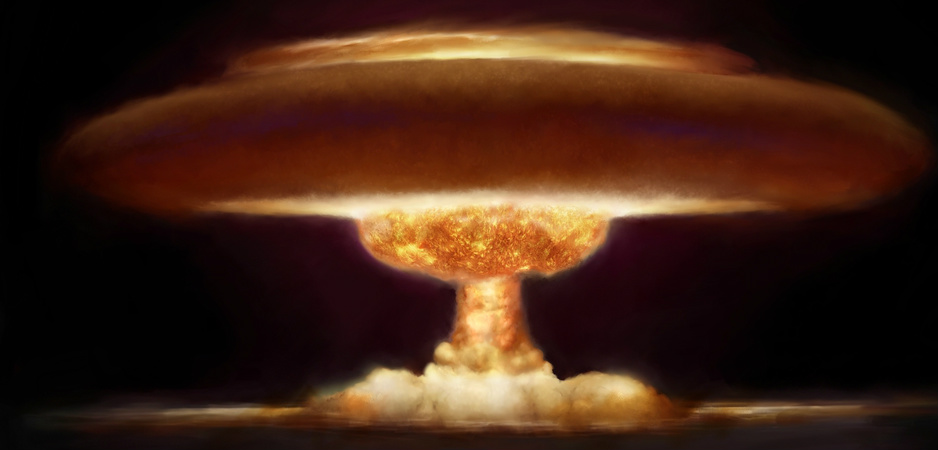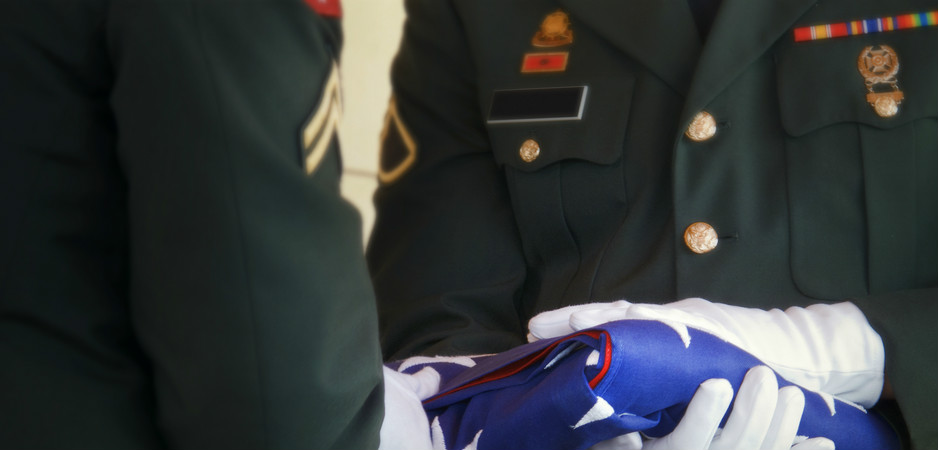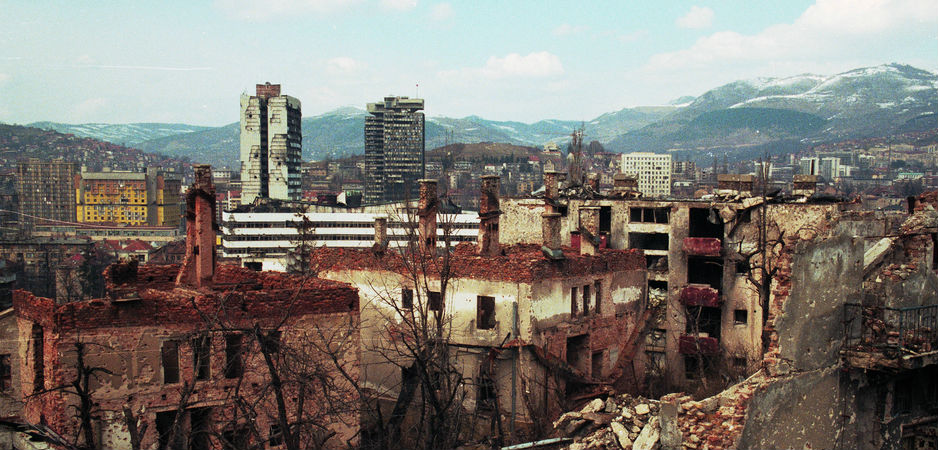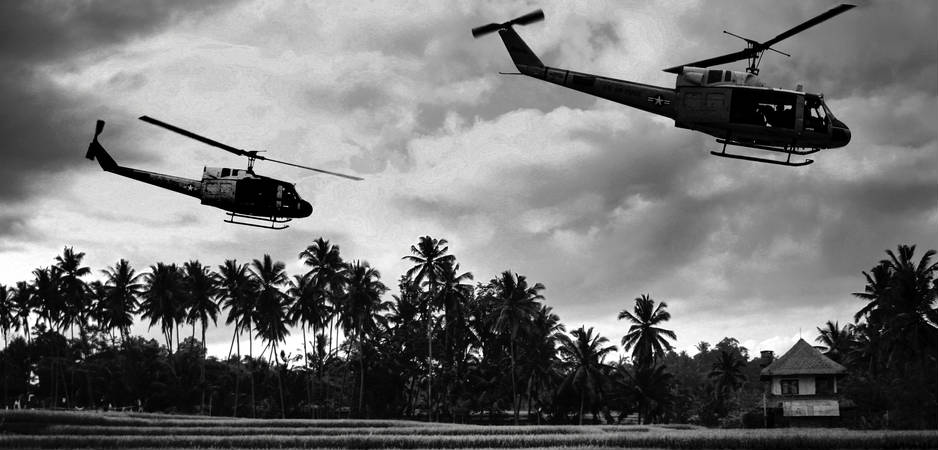Wilfred Burchett was the first reporter to enter the city of Hiroshima after the bombing in 1945.
Wilfred Burchett’s “The Atomic Plague” is often referred to as “the scoop of the century.” He was the first correspondent to enter the city of Hiroshima after the bombing, arriving with the first wave of US Marines on the USS Millett that landed in Japan on August 14, 1945. Armed with a pistol, a typewriter and a Japanese phrasebook, he traveled through scenes of unparalleled destruction caused by US air raids, onto “where Hiroshima used to be.” “There was devastation and desolation and nothing else.”
Burchett was the first to expose the devastating effects of radiation that was being denied by the Allied forces at the time. His dispatch conveys the harrowing confusion and ignorance of the victims as to what was done to them — it was thought the bombs contained a poisonous gas, perhaps, and doctors hoped the Americans would provide an antidote. By the end of 1945, some 140,000 were dead in Hiroshima and a further 70,000 in Nagasaki — a number that will continue to grow over the course of the century.
Despite the Allied officials’ attempts to censor the story, Burchett’s dispatch was published in The Daily Express on September 5, 1945. It is a piece of journalism that should be read over and over again — “as a warning to the world” — because like no other account, it brings home the inhuman reality of a nuclear holocaust.
“I Write This as a Warning to the World”
The Daily Express, London, September 5, 1945.
Express Staff Reporter Peter Burchett [sic] was the first Allied staff reporter to enter the atom-bomb city. He travelled 400 miles from Tokyo alone and unarmed carrying rations for seven meals — food is almost unobtainable in Japan — a black umbrella, and a typewriter. Here is his story from —
HIROSHIMA, Tuesday.
In Hiroshima, 30 days after the first atomic bomb destroyed the city and shook the world, people are still dying, mysteriously and horribly — people who were uninjured by the cataclysm — from an unknown something which I can only describe as atomic plague.
Hiroshima does not look like a bombed city. It looks as if a monster steamroller had passed over it and squashed it out of existence. I write these facts as dispassionately as I can in the hope that they will act as a warning to the world. In this first testing ground of the atomic bomb I have seen the most terrible and frightening desolation in four years of war. It makes a blitzed Pacific island seem like an Eden. The damage is far greater than photographs can show.
When you arrive in Hiroshima you can look around and for 25, perhaps 30, square miles you can hardly see a building. It gives you an empty feeling in the stomach to see such man-made devastation.
And so the people of Hiroshima today are walking through the forlorn desolation of their once proud city with gauze masks over their mouths and noses. It probably does not help them physically. But it helps them mentally.
I picked my way to a shack [sic] used as a temporary police headquarters in the middle of the vanished city. Looking south from there I could see about three miles of reddish rubble. That is all the atomic bomb left of dozens of blocks of city streets, of buildings, homes, factories and human beings.
Still They Fall
There is just nothing standing except about 20 factory chimneys — chimneys with no factories. I looked west. A group of half a dozen gutted buildings. And then again nothing.
The police chief of Hiroshima welcomed me eagerly as the first Allied correspondent to reach the city. With the local manager of Domei, a leading Japanese news agency, he drove me through, or perhaps I should say over, the city. And he took me to hospitals where the victims of the bomb are still being treated.
In these hospitals I found people who, when the bomb fell, suffered absolutely no injuries, but now are dying from the uncanny after-effects.
For no apparent reason their health began to fail. They lost appetite. Their hair fell out. Bluish spots appeared on their bodies. And the bleeding began from the ears, nose and mouth.
At first the doctors told me they thought these were the symptoms of general debility. They gave their patients Vitamin A injections. The results were horrible. The flesh started rotting away from the hole caused by the injection of the needle.
And in every case the victim died.
That is one of the after-effects of the first atomic bomb man ever dropped and I do not want to see any more examples of it. But in walking through the month-old rubble I found others.
The Sulphur Smell
My nose detected a peculiar odour unlike anything I have ever smelled before. It is something like sulphur, but not quite. I could smell it when I passed a fire that was still smouldering, or at a spot where they were still recovering bodies from the wreckage. But I could also smell it where everything was still deserted.
They believe it is given off by the poisonous gas still issuing from the earth soaked with radioactivity released by the split uranium atom.
And so the people of Hiroshima today are walking through the forlorn desolation of their once proud city with gauze masks over their mouths and noses. It probably does not help them physically. But it helps them mentally.
From the moment that this devastation was loosed upon Hiroshima the people who survived have hated the white man. It is a hate the intensity of which is almost as frightening as the bomb itself.
“All Clear” Went
The counted dead number 53,000. Another 30,000 are missing, which means “certainly dead”. In the day I have stayed in Hiroshima – and this is nearly a month after the bombing – 100 people have died from its effects.
They were some of the 13,000 seriously injured by the explosion. They have been dying at the rate of 100 a day. And they will probably all die. Another 40,000 were slightly injured.
These casualties might not have been as high except for a tragic mistake. The authorities thought this was just another routine Super-Fort raid. The plane flew over the target and dropped the parachute which carried the bomb to its explosion point.
Many people had suffered only a slight cut from a falling splinter of brick or steel. They should have recovered quickly. But they did not. They developed an acute sickness. Their gums began to bleed. And then they vomited blood. And finally they died.
The American plane passed out of sight. The all-clear was sounded and the people of Hiroshima came out from their shelters. Almost a minute later the bomb reached the 2,000 foot altitude at which it was timed to explode – at the moment when nearly everyone in Hiroshima was in the streets.
Hundreds upon hundreds of the dead were so badly burned in the terrific heat generated by the bomb that it was not even possible to tell whether they were men or women, old or young.
Of thousands of others, nearer the centre of the explosion, there was no trace. They vanished. The theory in Hiroshima is that the atomic heat was so great that they burned instantly to ashes – except that there were no ashes.
If you could see what is left of Hiroshima you would think that London had not been touched by bombs.
Heap of Rubble
The Imperial Palace, once an imposing building, is a heap of rubble three feet high, and there is one piece of wall. Roof, floors and everything else is dust.
Hiroshima has one intact building – the Bank of Japan. This in a city which at the start of the war had a population of 310,000.
Almost every Japanese scientist has visited Hiroshima in the past three weeks to try to find a way of relieving the people’s suffering. Now they themselves have become sufferers.
For the first fortnight after the bomb dropped they found they could not stay long in the fallen city. They had dizzy spells and headaches. Then minor insect bites developed into great swellings which would not heal. Their health steadily deteriorated.
Then they found another extraordinary effect of the new terror from the skies.
Many people had suffered only a slight cut from a falling splinter of brick or steel. They should have recovered quickly. But they did not. They developed an acute sickness. Their gums began to bleed. And then they vomited blood. And finally they died.
All these phenomena, they told me, were due to the radio-activity released by the atomic bomb’s explosion of the uranium atom.
Water Poisoned
They found that the water had been poisoned by chemical reaction. Even today every drop of water consumed in Hiroshima comes from other cities. The people of Hiroshima are still afraid.
The scientists told me they have noted a great difference between the effect of the bombs in Hiroshima and in Nagasaki.
Hiroshima is in perfectly flat delta country. Nagasaki is hilly. When the bomb dropped on Hiroshima the weather was bad, and a big rainstorm developed soon afterwards.
And so they believe that the uranium radiation was driven into the earth and that, because so many are still falling sick and dying, it is still the cause of this man-made plague.
At Nagasaki, on the other hand, the weather was perfect, and scientists believe that this allowed the radio-activity to dissipate into the atmosphere more rapidly. In addition, the force of the bomb’s explosion was, to a large extent, expended into the sea, where only fish were killed.
To support this theory, the scientists point out to the fact that, in Nagasaki, death came swiftly, suddenly, and that there have been no after-effects such as those that Hiroshima is still suffering.
Postscriptum
“It so happened that step by step and almost accidentally, I had achieved a sort of journalistic Nirvana, free of any built-in loyalties to governments, parties, or any organizations whatsoever. My loyalty was to my own convictions and my readers. This demanded freedom from any discipline except that of getting the facts on important issues back to the sort of people likely to act — often at great self-sacrifice — on the information they received. This was particularly so during my reporting from Vietnam, the most important of my career, far too important to be swayed by dictates from outside or above. Over the years, and in many countries, I had a circle of readers who did not buy papers for the stock market reports or strip cartoons, but for facts on vital issues affecting their lives and their consciences. In keeping both eyes and both ears open during my forty years’ reporting from the world’s hot spots, I had become more and more conscious of my responsibilities to my readers. The point of departure is a great faith in ordinary human beings and the sane and decent way they behave when they have the true facts of the case.”
— Wilfred Burchett, At the Barricades
*[The above essay is adapted from Rebel Journalism: The Writings of Wilfred Burchett, with permission by George Burchett.]
The views expressed in this article are the author’s own and do not necessarily reflect Fair Observer’s editorial policy.
For more than 10 years, Fair Observer has been free, fair and independent. No billionaire owns us, no advertisers control us. We are a reader-supported nonprofit. Unlike many other publications, we keep our content free for readers regardless of where they live or whether they can afford to pay. We have no paywalls and no ads.
In the post-truth era of fake news, echo chambers and filter bubbles, we publish a plurality of perspectives from around the world. Anyone can publish with us, but everyone goes through a rigorous editorial process. So, you get fact-checked, well-reasoned content instead of noise.
We publish 2,500+ voices from 90+ countries. We also conduct education and training programs
on subjects ranging from digital media and journalism to writing and critical thinking. This
doesn’t come cheap. Servers, editors, trainers and web developers cost
money.
Please consider supporting us on a regular basis as a recurring donor or a
sustaining member.
Support Fair Observer
We rely on your support for our independence, diversity and quality.
Will you support FO’s journalism?
We rely on your support for our independence, diversity and quality.


























